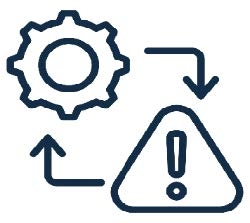Hydroponic Production of Edible Crops: Planning for the Market
ID
SPES-461NP
Introduction
According to the 2017 Census of Agriculture, U.S. greenhouse vegetable farms more than doubled from 2012 (USDA 2019). Virginia fell within the top 10 states for acreage of vegetables and berry crops grown under protected culture. Protected culture includes greenhouses and structures like high tunnels. With close to two and a half million square feet devoted mostly to tomatoes, vegetables, herbs, and strawberries, the value of Virginia greenhouse sales in 2017 was over 31 million dollars! A lot of this increase in square footage was due to the addition of large operations coming into Virginia.
In the 2019 Census of Horticultural Specialties, Virginia had 78 operations under protected culture with 41% of the total production (cwt) attributed to hydroponic operations (USDA 2020). Since this census, more large-scale protected culture greenhouses have been established or expanding in Virginia (Virginia Cooperative Extension 2021; HortiDaily 2022; Jacobs 2022; The Produce Reporter Daily eNews 2022; Wallace 2022a, b; Wong 2022).
While there has been enormous growth in large indoor farms, there has also been an increase in smaller hydroponic greenhouse operations dedicated to serving local, regional markets and providing fresh produce year-round (Hansen 2021). With the increasing number of controlled environment agriculture farms, Virginia Cooperative Extension is working closely with specialty crop growers to address the challenges of establishing and managing hydroponic greenhouse operations. This publication will focus on the questions related to getting started and the sorts of considerations every exploring or beginning farmer should address before breaking ground or expanding their operation.
Market Opportunities
Nationwide, consumer demand for premium quality, consistency, and locally grown produce, along with newer greenhouse technologies, appears to be fueling the growth of the greenhouse industry (Sparks 2020). Hydroponic growing systems are popular for growing specialty crops like lettuces and other leafy greens, herbs, tomatoes, peppers, and cucumbers. They are also used for growing other crops like microgreens and strawberries (Figure 1). Consumers often perceive greenhouse-grown produce as being fresher, longer lasting, more flavorful, sustainable, and safer. The greenhouse industry has built upon these perceptions to brand and sell their products to a willing consumer base, even when prices may be higher as compared to field-grown counterparts (Hermann 2018; Sijmonsma 2019).

With the increasing consumer demand and market opportunities for hydroponically grown produce, Virginia Cooperative Extension (VCE) specialists wanted to better understand production and marketing barriers and challenges affecting hydroponic operations. In 2019, VCE conducted an online survey to gauge Virginia growers using or interested in protected culture systems (Latimer et al. 2019). Of the total responses (26), 61% were currently growing crops using protected culture (e.g., indoor growing, greenhouse, high tunnel, or hoop house), while 35% were exploratory farmers interested in these systems. Those currently using protected culture systems had been growing crops for less than ten years, with two thirds being less than five years. The top crops grown were tomatoes and leafy greens, and facilities used were polyethylene covered greenhouses (36%), glass greenhouses (14%), and fully indoor growing environments (14%). The main markets sold to were retailers, food hubs, wholesalers, and public schools. When asked about challenges, the highest ranked items were having available capital, labor costs and availability, operations costs (inputs and energy usage), managing nutrients, incorporating new technologies, and developing marketing strategies.
In terms of new technologies, growers were most interested in learning and understanding more about automation and data analytics (Figure 2).

Failing to Plan is Planning to Fail
USDA defines beginning farmers and ranchers as “those who have operated a farm or ranch for 10 years or less either as a sole operator or with others who have operated a farm or ranch for 10 years or less” (USDA 2022). One valuable piece of information from the 2019 VCE survey was that all the current growers using protected culture were beginning farmers (Latimer et al. 2019).
Some of the most critical mistakes made by new and beginning hydroponic farmers are the result of not fully researching and planning their business before they have invested in their operation. Often, crops are chosen before there is a good understanding of production needs, operation costs, market trends, and consumer demand (Agrilyst 2017). However, with good planning and utilizing resources — like this factsheet series, beginning farmer groups, cooperative extension, industry professionals, land- grant universities, and other support — farmers can maximize their chances of success by reducing business risk and performing due diligence before breaking ground. The remainder of this factsheet focuses on the essentiality of whole farm planning.
Whole Farm Planning
One resource that can be used to discover whole farm planning is the Virginia Beginning Farmer & Rancher Coalition Program (VABFRCP). Since its inception in 2010, this statewide coalition has created a vast network of support and resources to build capacity for beginning farmers. A critical resource the VABFRCP developed is the Virginia Whole Farm Planning Curriculum for farm start-up and development. While some of the content does not apply specifically to hydroponic production, the curriculum is an excellent business planning resource and tool. Additionally, the VABFRCP provides training, workshops, and other opportunities to learn and develop a strong network (Virginia Beginning Farmer & Rancher Coalition Program 2022).
Conducting an Initial Assessment
The first part of whole farm planning is to verbalize your “ideal” dream operation. As your dream evolves, it is important to conduct a personal assessment by inventorying your resources and preferences including your quality-of-life preferences, personal resources, land and infrastructure resources, financial resources, production and stewardship preferences, and marketing options and preferences. The central purpose of this process is to guide and equip you to make the best-informed decisions as you develop your whole farm business plan. Module 1 of the Whole Farm Planning Curriculum provides extensive worksheets to guide you in your assessment (Niewolny et al. 2021; Niewolny et al. 2013).
Next Steps
Once you complete your initial inventory, you can begin to set goals and determine action steps as you take a deeper dive into potential markets, crops, growing systems and practices, and business management and planning (Vallotton et al. 2017; Westfall-Rudd et al. 2021; Agribusiness Center for Research & Entrepreneurship, Clemson Extension Agribusiness, and Matson Consulting 2021).
What Comes First: The Crop or The Market?
Just like any business, careful planning and market understanding is essential for making a farm successful. Understanding the market dynamics and conducting due diligence before beginning production can help you navigate the marketplace — especially for niche crops. The hemp industry is a good example of this phenomena. In 2016, Virginia growers rushed to invest into hemp farming, while the state still needed to catch up with policy, processors, and end-users—leaving many farmers to fail because with a highly regulated crop there were not enough processors to handle the product (Figure 3). In 2019, 10,000 acres were licensed to grow hemp and, by 2021, only 350 acres were planted in hemp (The Hemp Industries Association 2022).
There are now more registered processors in Virginia, but there are also more regulatory hurdles and restrictions on certain hemp products (Le Dem 2022; Virginia Department of Agriculture and Consumer Services 2022).

While hemp is a more complicated and unique crop, the main point is that before investing any capital and resources, it is critical to conduct market research on the specific crops of interest, and what market channels you might sell through (Figure 4) (Hughes et al. 2022; Vallotton et al. 2017).
Subscribe to trade magazines and blogs that focus on hydroponic market trends, crops, and systems, as well as highlighting farmer case studies. In addition to online or printed greenhouse content, consider attending workshops and webinars where you can learn more. Cooperative extension, regional grower associations, and other groups offer training opportunities. In addition to getting information, in- person workshops are a great opportunity to establish and build your network with other hydroponic farmers, grower groups, industry players, and extension educators. There is nothing like the experience and perspective that can be gained from farmers and mentors in the hydroponic greenhouse community (Upstart University 2022).
They can provide input and tips on market trends, specific crops, and systems, and likely will save you time and unnecessary footwork. Most importantly, fostering a strong network builds the vital relationships needed as you pursue your business venture (Mullins, Sperry et al. 2023a, b).

Selecting a Hydroponic Greenhouse System
Once you have explored your potential market channel(s) and crop(s), it is time to consider the appropriate hydroponic growing system. Choosing the right system for your crop type will be essential to your profitability, since certain crops have higher profit margins when grown in different system types. For example, 60% of microgreen farmers reported being profitable in hydroponic farming, likely due to it being a high dollar crop (i.e., high profitability per pound) (Agrilyst 2017). Another example is that you could potentially make 46% profit margin by growing leafy greens in a hydroponic greenhouse (Agrilyst 2017); however, is that margin high enough to run and grow your business?
Other considerations related to choosing a system include costs like overhead, labor, and maintenance, and how long it will take to get a return on your investment (ROI). Remember, on average, it takes protected culture farmers seven years to become profitable (Agrilyst 2017). For an overview of common hydroponic greenhouse systems, refer to factsheets in this series (Mullins, Vallotton et al. 2023a-c).
Start-up Costs
It is important to think through all costs and benefits for developing a specific hydroponic system, since establishing a hydroponic structure and system is capital intensive and start-up costs are high. While these farms use less water and land than conventional farms growing the same crops, they also can have high energy costs, especially when used for year-round growing (Wong 2022). As with any farm, there are on-going operating and maintenance costs. It is critical to keep records of all production, harvest, and post-harvest handling costs such as labor, inputs, tools, equipment, facilities, and transportation (Giles 2022).
Operating and Maintenance Costs
Some thoughtful advice from established farmers is to invest as much into your maintenance costs as you do in your start-up costs (Mullins, Sperry et al. 2023b; Sperry et al. 2023c). Maintenance can be both predictable and unpredictable. Talking with your suppliers and determining when you will need to conduct certain maintenance will help you predict some of the costs ahead of time. However, like with anything new, there will be a learning curve, and your specialized facility will need its own maintenance schedule that you will learn over time. Keeping a rainy day fund will be important to cover those costs so you can keep operations running and will help with the longevity and profitability of your farm. Operating costs, like overhead, labor, and supplies, will grow as your farm grows. Good planning early on and watching growth predictions will help you prepare for those costs so that you have a good idea of the profit margin your farm needs to make.
Business Planning
How do you put in place well-grounded operation and maintenance plans? Begin with an overall business plan, which includes your mission, values, executive summary, organization and management, market and industry analysis, marketing plan and SWOT (strengths, weaknesses, opportunities, and threats) analysis, service and product descriptions (cost and pricing), financial statements and predictions, and funding request (Figure 5) (Sperry et al. 2023a). A good resource for business plan building is the Agribusiness Center for Research & Entrepreneurship’s Business Plan Development Guide (2021).

Market Fluctuations and Volatility
With the everchanging economy, it is vital to stay informed of market fluctuations and how that may be impacting the bottom line. Recognize hidden costs and unforeseen circumstances. While no one can predict pandemics and repercussions from global conflicts, it is critical to understand the market and how volatile it can be, and to make sure that contingencies are a part of your business plan.
Market volatility in is an inherent risk associated with any business. Assuming those risks are part of the nature of opening a business, and preparing for those risks, will help your organization survive.
Creativity, flexibility, and pivoting are important skills to use during market changes that disrupt your supply chain or market prices. Making changes and adapting with the market are keys to success. Being well connected in your community and state is one way to make pivoting easier to accomplish. The better connections to community members and resources you have, the more likely it is that you can make the changes necessary for your business’s survival.
Clearly, an excellent example of extreme market volatility is the COVID-19 pandemic and the dramatic impact it has had on different market sectors and the supply chain, along with on-going product shortages both at the farm and the consumer level (Snyder 2020). Institutions, such as schools and universities, along with restaurants, were shuttered, whereas demand for direct to consumer, retail, and online options dramatically increased (The Wallace Center 2020).
While all farmers, businesses, and consumers were adversely affected, the pandemic led to some interesting developments in the marketplace. For consumers typically buying from large grocery retailers, supply chain disruptions caused consumers to shift to more locally sourced goods (Edmondson et al. 2021). To meet this demand and the constraints of COVID, farmers used creative approaches such as integrating pre-paid, online ordering systems, and contactless on-farm pickups, including CSA-like multi-farm box sales (The Wallace Center 2020). In many cases, food hubs provided critical coordination for online sales, in conjunction with open-air and drive-through farmers markets (Hilbert 2020; Snyder 2020). While not everyone was able to withstand the upheaval caused by COVID, the impact of strong relationships and rapid, adaptive responses by the entire local and regional food system — growers, markets, food hubs, suppliers, consumers, non-profit groups, cooperative extension — was and has been critical (USDA 2021).
Closely tied to COVID have been the long-lasting impacts to the supply chain, especially due to trucking shortages and inputs like fertilizers, growing media, plastic products, and irrigation parts (Figure 6) (Jackson 2021; Giles 2022; Penson 2022).

Inflation and increased interest rates are currently and will be problematic in the agriculture industry. The cost of energy and fertilizer has already increased (Penson 2022) and is having a ripple effect on costs for trucking, labor, product packaging, pallets, and other oil-based products (Giles 2022). Navigating these changes is tricky, and, unfortunately, impacts the end consumer because it likely means needing to increase product prices. Labor shortages have continued to be challenging in many industries (Pension 2022).
With so many forces at work, supply chain disruptions and inflation are a reality of being in business, and as much as is feasible, it is important to prepare for them and be proactive. For example, some farmers have enough cashflow to purchase supplies in advance of the coming year to offset cost increases. This can be a temporary but good strategy if you have the cash on hand to prepare for these changes. Of course, bottlenecks and a limited supply does not always allow for doing so.
Understanding Risk
Unfortunately, your growth timeline doesn’t always match up with the opportunities in the market. Let’s say you are a new farmer and have not yet developed a strong network. You have a big loan because you recently built your facility after finishing a fund raiser. You were about to announce your arrival on the market, then COVID hit! Regardless of external factors, the loan payments have begun, but the market just isn’t there to receive your products. Even though you put the hard work in and did your due diligence and planning, there is a risk that you will not succeed. Therefore, it is so important to have a well thought out exit plan, and to include your family, friends, and support persons in your planning so that everyone who may be impacted is also prepared. There are many things you can do to recover your loss, like liquidate or sell your assets.
You can also protect your personal assets from your business assets or losses by creating an LLC (limited liability company) and working with state or federal government on financial programs, grants, or business law to reduce the amount of risk that may impact you and your business. For more information on financial risk management see the resources by Morgan et al. 2022a-c.
In the rest of this series, hydroponic greenhouse management, common hydroponic system types, crops, and food safety considerations will be discussed.
Summary Tips
As you move forward on a greenhouse business, remember the following tips:

- Invest time and effort into an initial whole farm planning inventory aimed at determining personal preferences and resources. Developing and establishing a hydroponic farm will reflect your unique values, skills, strengths, weaknesses, and overall resources.

- Build and strengthen your network. Doing so is critical for every part of your business.

- Do your homework and due diligence with market research. Starting and establishing a hydroponic greenhouse can be a huge outlay of capital, time, and other resources. Do not skimp on this vital step! Talk with other growers to find out what has worked for them and what hasn’t, and how they have adjusted to the changing marketplace.

- Fit your crop to the market and fit the system to your crop. Talking to potential customers will help you understand interests in different products. Choosing the right system for your crop type will be essential to your profitability.

- Develop a sound, dynamic business plan. Recognizing your business plan is a living document is important as market trends change and fluctuations happen. Shifting with the trends during the trajectory of your business will foster flexibility and resiliency. Knowing and planning for operating and maintenance costs is a large part of the plan. As you grow your business, revisit your business plan and make adjustments.

- Be a constant learner by engaging experts and other growers. Seek support from cooperative extension, suppliers, and grower groups. Reading, studying, and attending trainings will keep you up to date on trends, new technologies, and help to grow your network. Starting small to learn the business will help you master your process, such as experimenting with crop varieties that grow best in your hydroponic system.

Recognize risk is an inherent part of operating a business. Having contingencies is critical should unforeseen impacts occur.
References
Agribusiness Center for Research & Entrepreneurship (ACRE). 2021. Business Plan Development Guide. Clemson Extension Agribusiness, Matson Consulting.
Agrilyst. 2017. “State of Indoor Farming”.
Edmondson, H., M. Gill, B. Jablonski, J. Ladd, S. Schaffstall, D. Thilmany, and T. Woods. 2021. “U.S. Consumer Food Insights During the COVID-19 Pandemic”. Choices. Quarter 4.
Giles, F. 2022. “Supply-Chain Woes Continue for Specialty Crop Growers”. Specialty Crop Industry Magazine.
Hansen, J. 2021. “Green & Growing”. Produce Grower.
Herman, M. 2018. “Ceiling Still Rising On Greenhouse Produce”. Produce Business.
Hilbert, H. 2020. Embracing Change with New Relationships. Virginia Tech Center for Food Systems and Community Transformation.
Hortidaily News. 2022. “Gotham Greens Raises $310M to Accelerate National Greenhouse Expansion”. Hortidaily, September 12, 2022.
Hughes, M., A. Pressman, L. Oberholtzer, C. Dimitri, and R. Welsh. 2022. Selling to Local and Regional Markets: Barriers and Opportunities for Beginning Farmers. National Center for Appropriate Technology. IP595.
Jackson, B. 2021. “Current and Future Growing Media Supply and Demand Challenges”. Greenhouse Product News Magazine.
Jacobs, Jack. 2022. “Indoor Farming Firm in Goochland Plans Greenhouse Expansion”. Richmond BizSense, August 24, 2022.
Latimer, J., H. Scoggins, and A. Vallotton. 2019. Protected Culture Grower Survey. Unpublished data.
Latimer, J., A. Vallotton, C. Mullins, T. Sperry, and H. Scoggins. 2023. Hydroponic Production of Edible Crops: Management Basics. Virginia Cooperative Extension Publication. SPES- 462NP.
Le Dem, G. 2022. “Virginia Regulators Are Planning a Crackdown on Hemp Extracts Like Delta-8”. The Outlaw Report.
Morgan, K., P. Callan, A. Mark, K. Niewolny, T. Nartea, K. Scott, J. Hilleary, Y. Li, J. Bovay. 2022a. Farm Financial Risk Management Series Part I: Introduction to Farm Planning Budgets for New and Beginning Farmers. Virginia Cooperative Extension Publication. AAEC-114P (AAEC-296P).
Morgan, K., P. Callan, A. Mark, K. Niewolny, T. Nartea, K. Scott, J. Hilleary, Y. Li, J. Bovay. 2022b. Farm Financial Risk Management Series Part II: Introduction to Farm Planning Budgets for New and Beginning Farmers. Virginia Cooperative Extension Publication. AAEC-115P (AAEC-297P).
Morgan, K., P. Callan, A. Mark, K. Niewolny, T. Nartea, K. Scott, J. Hilleary, Y. Li, J. Bovay. 2022c. Farm Financial Risk Management Series Part III: Introduction to Farm Planning Budgets for New and Beginning Farmers. Virginia Cooperative Extension Publication. AAEC-116P (AAEC-298P).
Mullins, C., A. Vallotton, J. Latimer, T. Sperry, and H. Scoggins. 2023a. Hydroponic Production of Edible Crops: Nutrient File Technique (NFT) Systems. Virginia Cooperative Extension Publication. SPES-463NP.
Mullins, C., A. Vallotton, J. Latimer, T. Sperry, and H. Scoggins. 2023b. Hydroponic Production of Edible Crops: Deep Water Culture (DWC) Systems. Virginia Cooperative Extension Publication. SPES-464NP.
Mullins, C., A. Vallotton, J. Latimer, T. Sperry, and H. Scoggins. 2023c. Hydroponic Production of Edible Crops: Media Systems. Virginia Cooperative Extension Publication. SPES- 465NP.
Mullins, C., T. Sperry, A. Vallotton, J. Latimer, and M. Ludwig. 2023a. High Tech for Small-scale Hydroponics: Schuyler Greens Company. Virginia Cooperative Extension. SPES-472NP.
Mullins, C., T. Sperry, A. Vallotton, J. Latimer, and M. Ludwig. 2023b. Local, Community Focused Hydroponics: Endless Summer Harvest. Virginia Cooperative Extension. SPES-471NP.
Niewolny, K., C. Kloetzli, and A. Vallotton. 2013. Successful Farm Startup for Beginners: Virginia Beginning Farmer and Rancher Coalition Program. Virginia Cooperative Extension Publication. AEE-67P.
Niewolny, K., A. Vallotton, and C. Kloetzli. 2021. “Introduction to Whole Farm Planning.” Module I in Virginia Whole Farm Planning: An Educational Program for Farm Startup and Development, edited by D. M. Westfall-Rudd, K. Niewolny, and K. Trozzo. Virginia Cooperative Extension Publication. AEE-50P (ALCE-289P).
Penson J. 2022. “U.S. Agricultural Economy in 2022”. AgAmerica.
Sijmonsma, A. 2019. “Growing Lettuce Locally: How Close Can You Get?" HortiDaily, September 24, 2019.
Snyder, R. 2020. “How COVID-19 Is Affecting Greenhouse Vegetable Growers”. Growing Produce.
Sparks, B. 2020. “How the Greenhouse Leafy Greens Industry is Tackling Food Safety”. Greenhouse Grower.
Sperry, T., A. Vallotton, J. Latimer, C. Mullins, and H. Scoggins. 2023. Hydroponic Production of Edible Crops: System and Crop Comparisons. Virginia Cooperative Extension Publication. SPES-466NP.
Sperry, T., A. Vallotton, J. Latimer, C. Mullins, and M. Ludwig. 2023a. Farming Foundations in Hydroponics: Targeting the Marketplace. Virginia Cooperative Extension Publication. SPES-468NP.
Sperry, T., A. Vallotton, J. Latimer, C. Mullins, and M. Ludwig. 2023b. Farming Foundations in Hydroponics: Crop and System Types. Virginia Cooperative Extension Publication. SPES- 469NP.
Sperry, T., A. Vallotton, J. Latimer, C. Mullins, and M. Ludwig. 2023c. Farming Foundations in Hydroponics: Planning Your Production. Virginia Cooperative Extension Publication. SPES-470NP.
The Hemp Industries Association. 2022. “Virginia”.
The Produce Reporter Daily eNews. 2022. “AeroFarms Opens World’s Largest Aeroponic Smart Farm in Virginia”. Blue Book Services, Inc., September 13, 2022.
The Wallace Center at Winrock International. 2020. August 2020 Impact Assessment.
United States Department of Agriculture. 2019. 2017 Census of Agriculture. National Agricultural Statistics Service. AC-17-A-51.
United States Department of Agriculture. 2020. 2019 Census of Horticultural Specialties. National Agricultural Statistics Service. AC-17- SS-3.
United States Department of Agriculture. 2021. “Final Report: Local and Regional Food System Covid-19 Rapid Response”.
United States Department of Agriculture. 2022. “Socially Disadvantaged, Beginning, Limited Resource, and Female Farmers and Ranchers”.
Upstart University. 2021. “Step 2: Get Connected”. The Ultimate Guide to Starting a Farm. Accessed October 26, 2022.
Vallotton, A., A. Battah, R. Knox, A. Vargo, T. Archibald, R. Boyer, N. E. Cook, and T. Drape. 2017. Accessing Virginia Market Sectors: Establishing a Marketing Perspective. Virginia Cooperative Extension Publication. HORT- 279NP.
VanVranken, R. 2021. “Why Growers Should Consider Alternative Crops Market Opportunities”. Growing Produce.
Virginia Beginning Farmer & Rancher Coalition Program. 2022. Website Home Page.
Virginia Cooperative Extension. 2021. “Interest in Hydroponics, Aquaponics Growing in Virginia”. Vegetable Grower News.
Virginia Department of Agriculture and Consumer Services. 2022. “Industrial Hemp Webpage”.
Wallace, M. 2022a. “World’s Largest Campus for Indoor Vertical Farming Coming to VA”. Morning Ag Clips.
Wallace, M. 2022b. “Beanstalk Farms Celebrates Opening of Indoor Farm in Fairfax County”. Morning Ag Clips.
Westfall-Rudd, D., G. Groover, P. Callan, S. McKay, and Jo. Bovay. 2021. Whole Farm Business Management and Planning in Virginia Whole Farm Planning: An Educational Program for Farm Startup and Development. Virginia Cooperative Extension Publication. AEE-53P (ALCE-270P).
Wong, E. 2022. “Plenty to Build ‘World’s Largest’ Indoor Vertical Farming Complex”. Bloomberg.
Acknowledgements
This work was supported by the Virginia Department of Agriculture and Consumer Services (VDACS) Specialty Crop Block Grant Program, Award Number 2020-548, from the U.S. Department of Agriculture’s (USDA) Agricultural Marketing Service. Any opinions, findings, conclusions, or recommendations expressed in this publication are those of the authors and do not necessarily reflect the view of the US. Department of Agriculture.
Virginia Cooperative Extension materials are available for public use, reprint, or citation without further permission, provided the use includes credit to the author and to Virginia Cooperative Extension, Virginia Tech, and Virginia State University.
Virginia Cooperative Extension is a partnership of Virginia Tech, Virginia State University, the U.S. Department of Agriculture (USDA), and local governments, and is an equal opportunity employer. For the full non-discrimination statement, please visit ext.vt.edu/accessibility.
Publication Date
July 27, 2023



